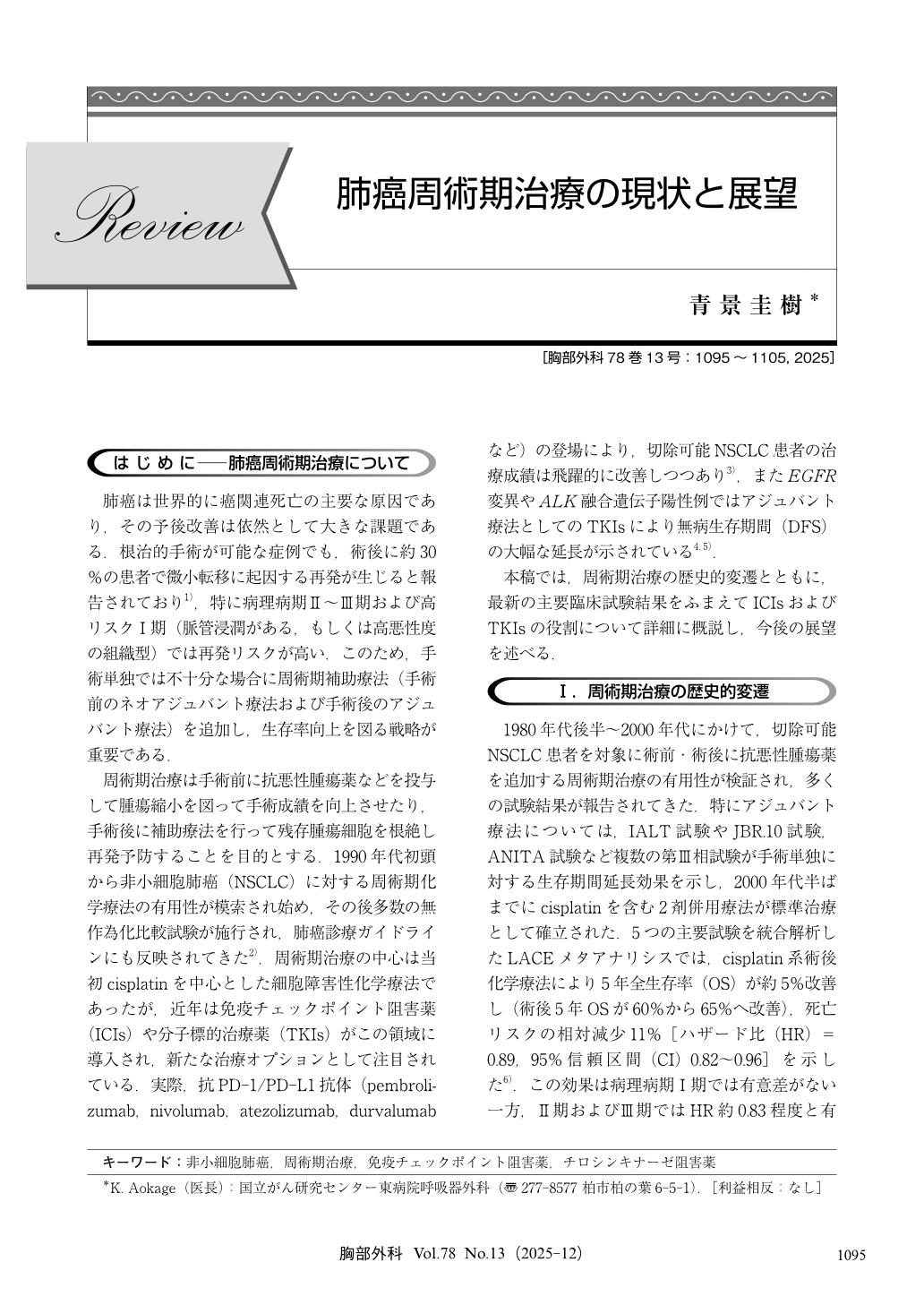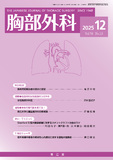Japanese
English
- 有料閲覧
- Abstract 文献概要
- 1ページ目 Look Inside
- 参考文献 Reference
肺癌は世界的に癌関連死亡の主要な原因であり,その予後改善は依然として大きな課題である.根治的手術が可能な症例でも,術後に約30%の患者で微小転移に起因する再発が生じると報告されており1),特に病理病期Ⅱ~Ⅲ期および高リスクⅠ期(脈管浸潤がある,もしくは高悪性度の組織型)では再発リスクが高い.このため,手術単独では不十分な場合に周術期補助療法(手術前のネオアジュバント療法および手術後のアジュバント療法)を追加し,生存率向上を図る戦略が重要である.
Non-small cell lung cancer (NSCLC) remains a leading cause of cancer-related mortality worldwide, with high recurrence risk even after curative surgery. Perioperative treatment, including neoadjuvant and adjuvant strategies, has historically relied on platinum-based chemotherapy, which modestly improved survival outcomes. Recent advances have introduced immune checkpoint inhibitors (ICIs) and tyrosine kinase inhibitors (TKIs) as transformative options. Landmark trials, such as CheckMate 816, KEYNOTE-671, ADAURA, and ALINA, demonstrated significant improvements in pathological response, disease-free survival, and, in some cases, overall survival. ICIs have become a standard component for resectable stageⅡ-Ⅲ NSCLC, while osimertinib and alectinib established new standards for EGFR- and ALK-positive tumors, respectively. Remaining challenges include optimal patient selection, integration with surgery, and biomarker development. Future directions point to personalized strategies incorporating circulating tumor deoxyribonucleic acid (ctDNA) monitoring and novel therapies to further enhance prognosis in resectable NSCLC.

© Nankodo Co., Ltd., 2025


